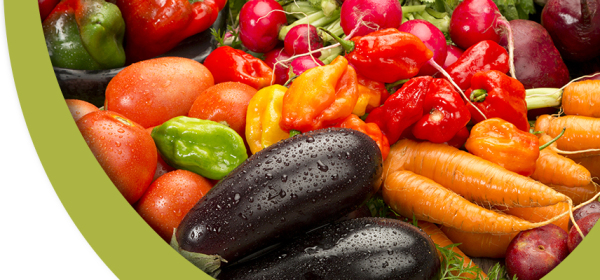 There’s conflicting advice about how and what to eat—low-fat, high-carb, low-carb, high-fat, high protein, grain-free. As a result, many people decide: “I’ll eat what tastes good.” The good news is you can eat delicious food, and nourish your body by eating a variety of healthy foods. Plus, there’s plenty of good science to support eating a balance of various high-quality food so that your body runs at peak performance. ChooseMyPlate.gov is a great resource to help you fuel your body for good health.
There’s conflicting advice about how and what to eat—low-fat, high-carb, low-carb, high-fat, high protein, grain-free. As a result, many people decide: “I’ll eat what tastes good.” The good news is you can eat delicious food, and nourish your body by eating a variety of healthy foods. Plus, there’s plenty of good science to support eating a balance of various high-quality food so that your body runs at peak performance. ChooseMyPlate.gov is a great resource to help you fuel your body for good health.
Grains—whole grains and starchy vegetables: Grains and starchy vegetables provide carbohydrates—the body’s preferred source of fuel. Whole grains are rich in magnesium and fiber, which are mostly lost when grains are processed.
- Good choices: brown rice, whole-wheat flour, quinoa, millet, barley, oats, corn, and potatoes
- Limit: refined grains like white rice and white bread and fried potatoes
Protein: Aim to eat healthy protein with every meal. These foods help control blood sugar levels and slow the digestion process. Your body needs regular servings of protein through the day to build and repair tissue.
- Good choices: poultry, fish, beans and lentils, nuts
- Limit: red meat, pork, cheese, bacon and other processed meats
Non-starchy vegetables: Non-starchy vegetables are a source of healthy carbohydrate and should make up the bulk of a meal. Vegetables are typically low in calories and fat and are packed with vitamins and minerals. The fiber in vegetables helps you feel full, lowers blood cholesterol, and maintains a healthy GI tract.
- Good choices: vegetables that are dark green, red, purple, yellow, orange, and white
- Limit: starchy vegetables like potatoes, yams, peas, and corn
Fruits: Like non-starchy vegetables, fruits are also loaded with vitamins, minerals, phytochemicals, and fiber.
- Good choices: a variety of fruits in various colors.
- Limit: overall daily servings to 1-2 cups, depending on age and gender
Milk/Dairy: Dairy foods usually have a combination of protein, carbohydrate, and fat. Choose foods that maintain their calcium content. Calcium is important for your bones, heart, muscle and nerves.
- Good choices: low-fat or non-fat plain yogurt or milk, low-fat cottage cheese, and calcium-enriched almond milk or orange juice
- Limit: cheese, whole and 2% milk, yogurts, and other products made with whole milk.
Fats: The body needs some fat to stay healthy—essential fatty acids that we must get from food. A small amount of fat at each meal also helps to slow digestion and increase satisfaction. Fats are often incorporated into foods you eat, especially protein, dairy, and grain foods.
Think of fats as either saturated or unsaturated. Ideally, you want to eat unsaturated fats and avoid saturated fats. Replacing saturated with unsaturated fats is a smart move.
- Good choices: unsaturated fats like oils (olive, canola, safflower, sunflower), nuts and seeds (walnuts, almonds, pumpkin, oily fish, avocado)
- Limit: saturated fats in butter, full-fat dairy products, beef, pork, poultry skin, coconut oil, palm oil, and some stick margarines
- Avoid trans-fats: shortening and partially hydrogenated oils, which may be hidden in baked and processed foods
Sources: FruitsAndVeggiesMoreMatters.org/fruit-and-veggie-color-list, ChooseMyPlate.gov
[thrive_leads id=’406′]

